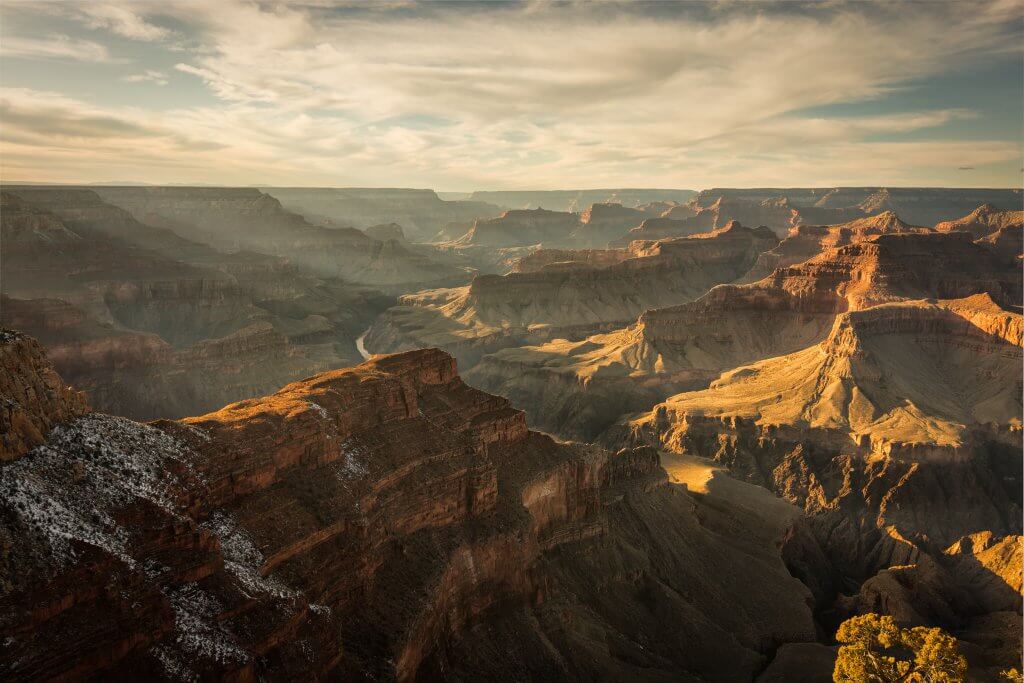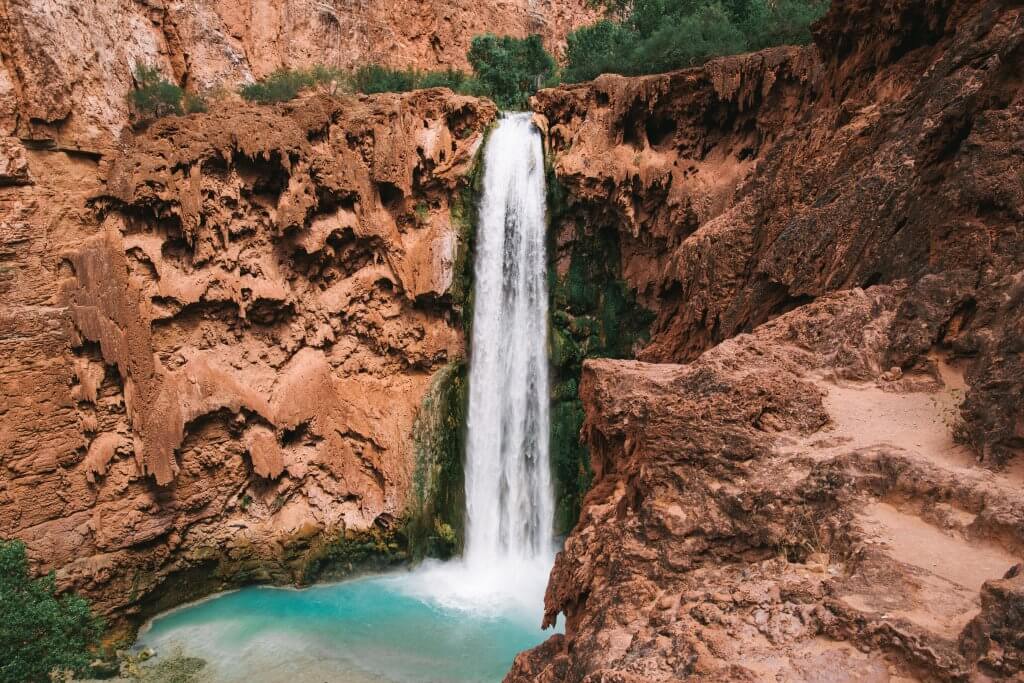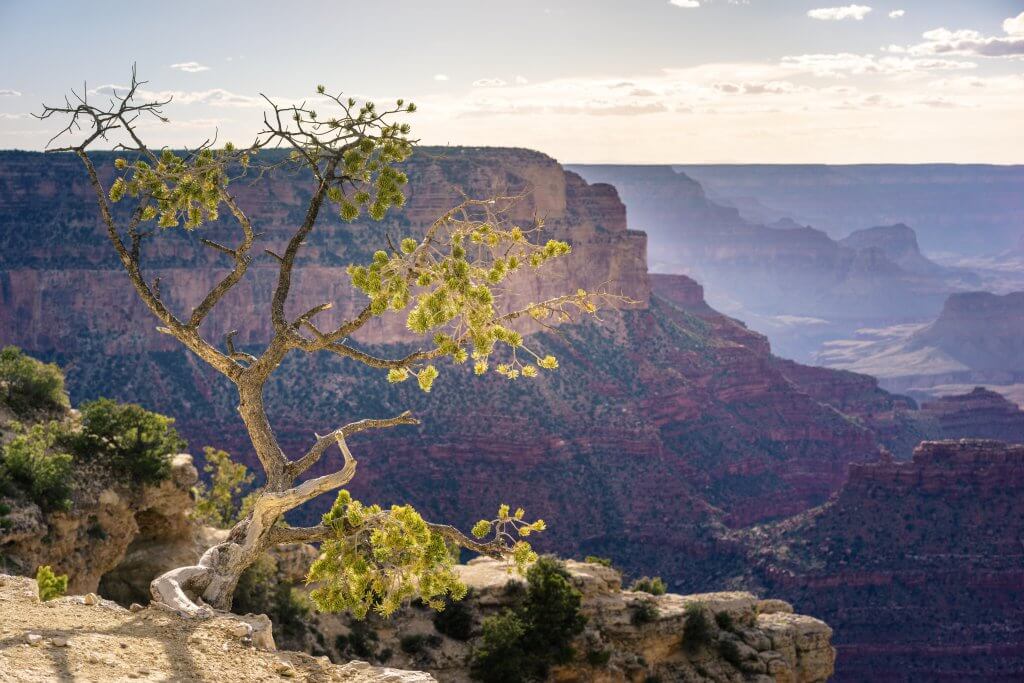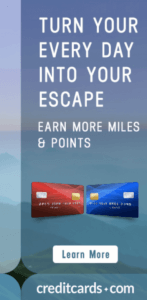As one of the Seven Natural Wonders of the World, it's easy to see why the Grand Canyon is one of America's most famous national parks. In reality, "grand" is probably a massive understatement.
At an unfathomable 277 miles long, 18 miles wide, and 6,000ft deep, the Grand Canyon is one of America’s most majestic, awe-inspiring places. What makes it even more special is that a trip to the Grand Canyon National Park can be whatever you want it to be. It can be a relaxing luxury vacation or a rugged budget backpacking adventure. You can get up close and personal with billion-year-old rock formations or you can admire the views from the park's comfortable lookout points. Grand Canyon National Park is truly your oyster.

Things to know about Grand Canyon National Park
The Grand Canyon is truly massive
You could stay in the park for an entire week and barely scratch the surface of the upper rims. Plan accordingly and don’t try to cram too much in one day. For perspective, it’s about a 4.5-hour drive from the North to the South Rim. Still, despite its massive size, many travelers are saddened to learn that the famous Horseshoe Bend is actually not a part of Grand Canyon National Park.
Cell phone service doesn't exist in much of the park
Download anything you might need onto your device, carry a physical map, and let someone know where you’re going and what time you intend to be back.
Buy your park pass before you go
Getting your National Park Pass ahead of time and downloading it onto your smartphone will save you time and allow you to avoid the line of cars waiting to pay their entrance fees.
You don't need a car
Save yourself the headache of traffic, parking fees, gas money, and car rental fees. Use the park’s free shuttle bus service as a budget friendly way to get around instead.
Staying safe in Grand Canyon National Park
Drink water. A lot of it.
The National Park Service recommends that each hiker drinks about a gallon of water per day. Don’t wait until you’re thirsty, as this usually means that you’re already dehydrated. Carry your water bottle and take small sips throughout your trek. Come prepared and bring all the water you’ll need because drinking water is only available at a few locations in the park.
Make sure to eat
Eating in the scorching heat might sound like the last thing you want to do, but eating is just as important as drinking water when hiking the Grand Canyon. Not only does food provide your body with the energy needed for strenuous hikes, but the right food will help you replace the electrolytes that you’ve lost to sweat throughout the day.
It’s a long way down
Fall deaths aren’t actually the most common cause of death at the Grand Canyon but they do occasionally happen. Never climb over barriers and always stay on the trail, behind railings, and at least six feet from the edge of the rim.
Best time to visit Grand Canyon National Park
The best times to visit Grand Canyon National Park are Spring (March-May) or Fall (late August-September). Not only are these times better for your budget, but you’ll avoid the summer months when the park is at its hottest and busiest, leading to longer wait times, bigger crowds, and more expensive lodging.

Things to do in Grand Canyon National Park
Catch the sunrise or sunset of a lifetime
Some places are more popular than others but, luckily, there’s really no one "best" spot at the Grand Canyon for catching an incredible sunrise or sunset.
For sunset, Hopi Point is a very popular sunset spot. Be sure to arrive early. Buses regularly take visitors to and from here, meaning that it can get crowded. If you'd like to try your luck elsewhere, Yavapai, Mohave, and Pima Points are other great, less crowded spots to see the sunset. For sunrise, Mather Point and Yaki Point are highly desirable places to set up.
Hike your way through the canyon
Grand Canyon National Park offers countless hikes for varying skill levels.
Bright Angel Trail is the most popular trail from the South Rim and is easily accessible, as the trailhead sits west of the Bright Angel Lodge in Grand Canyon Village. The trail is steep but well maintained, providing shaded rest houses, emergency phones, toilets, and taps for drinking water, making it the park’s safest trail.
Kaibab Trail is the only maintained trail on the North Rim that descends down into the Canyon to the Colorado River. The trail is 14 miles long but day hikers can just hike to Coconino Overlook (1.5 miles roundtrip, approx. 25 min) or to Supai Tunnel (4 miles round trip, approx. 1 hour). With limited shade, this steep trail is better suited for more experienced hikers.
Fight vertigo on the Grand Canyon Skywalk
The Grand Canyon Skywalk juts out 70 feet over the canyon and has a glass walkway that provides visitors with one of a kind views of the canyon below. Towering 4,000 feet above the canyon floor, this horseshoe-shaped bridge actually sits outside the park, along the West Rim on land belonging to the Hualapai Indian Reservation.
Cool off at Havasu Falls
Regarded as one of the most beautiful places in all of the Grand Canyon, Havasu Falls is undoubtedly the crown jewel of Havasu Canyon. Here, turquoise waters cascade over red rocks and into a large swimming pool below, giving Havasu Falls the feeling of a true desert Oasis.
Technically, these falls are actually located just outside the park on land belonging to the Havasupai Tribe.
Flying to the Grand Canyon
The closest major airport to the South Rim is Phoenix Sky Harbor Airport (PHX), (3.5 to 4-hour drive away). Flagstaff Pulliam Airport (FLG) is actually closer (90-min away), but flights into FLG are expensive and harder to come by. When visiting the North Rim, many travelers fly into Las Vegas’ McCarran International Airport (LAS), which is 4.5-hours away.
Grand Canyon National Park Admission Fee
A vehicle permit is $35 per vehicle, which covers everyone in the vehicle up to 15 passengers. Motorcycle permits are $30 and individual permits are $20.

Where to Stay at the Grand Canyon
Camping in Grand Canyon National Park
Grand Canyon National Park has several developed campgrounds that allow you to pull up in your car or RV. Reservations can be made for 2 of 3 National Park Service campgrounds within the park.
If you’d instead like to backpack and camp within the Grand Canyon, you’ll need a backcountry permit.
Phantom Ranch
Securing a spot at Phantom Ranch isn’t as easy as booking online but it’s worth a shot for the incredibly unique experience of staying at the bottom of the Grand Canyon. This historic lodge is the only accommodation within the actual canyon and can only be reached by foot, mule, or by rafting the Colorado River.
Space at Phantom Ranch is incredibly limited, so reservations must be made a whopping 13 to 15-months in advance and are awarded through an online lottery system.
Grand Canyon Lodge
Seated just above the North Rim of the canon, the historic Grand Canyon Lodge is the only accommodation within Grand Canyon National Park along the North Rim. The lodge offers guests either motel-style rooms or cozy, Western cabins.
Guests of the Grand Canyon Lodge swear that the jaw-dropping views from the main lodge, along with those from select rooms with rim views, are worth the price of admission alone. At night, the lodge is the perfect spot for stargazing in the dark skies above the canyon.
Plan your visit to Grand Canyon National Park
It's easy to see why the Grand Canyon is a bucket list item for so many people. Within this sprawling national park, vast deserts, mammoth peaks, and breathtaking vistas come together to create a truly magical world like no other place on earth. So when you're ready to cross this world wonder off of your bucket list, be sure to save this budget guide, sign up to receive cheap flight alerts, and start planning your visit to the Grand Canyon.
Want to get our flight deals as soon as they’re published? Follow Dollar Flight Club on Facebook, Instagram, and Twitter, and join to get email alerts from our deals feed.
BY: ZACH ANDERSON, CONTENT MARKETING & FLIGHT EXPERT
Zach is a digital marketer, copywriter, and flight deal expert at Dollar Flight Club where he helps 1 million people travel more. As a digital nomad, he is deeply passionate about location independence, Thai food, and helping others see the world affordably.



